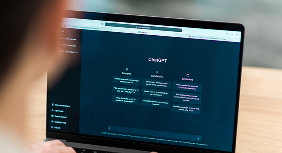Introduction
Culture is what shapes how your team thinks and acts when nobody's watching. And when it comes to coding securely, it is the quiet decisions made each day that matter most. That's why building a strong culture of secure coding is not just a technical shift. It is a leadership move. Let's explore how you can inspire your development team to make security a natural part of how they work, not just something they tack on at the end.
Make Security a Team Habit
Habits drive culture. The more regularly secure practices are used, the more natural they become. Start embedding these practices into your daily workflows. That could mean:
Code reviews that include security questions
Pair programming with a security-focused mindset
Daily standups that address not just bugs but security concerns
Encouraging the team to share secure coding wins during retrospectives
The goal is to normalize the idea that writing secure code is simply part of writing good code.
Equip Your Team With the Right Tools
Even the best intentions need support. Give your developers tools that make secure coding easier, faster, and more efficient.
Useful tools may include:
Static analysis scanners
These review code in real time and flag insecure patterns.
Secure code linters
These help enforce coding standards that are aligned with security best practices.
Dependency checkers
These alert you to vulnerabilities in third-party libraries before they become liabilities.
By integrating these tools into your workflow, security becomes a constant, quiet ally — not an afterthought.
Offer Ongoing Education
Security threats change fast. What was safe a year ago might be risky now. That's why continuous learning is essential.
Set up a rhythm for skill development. This could look like:
Monthly security workshops or lunch-and-learns
Access to updated secure coding courses
Encouraging team members to attend security conferences and share what they learn
Internal knowledge hubs with guides, examples, and updates on secure practices
Make learning part of your team's growth, not a separate task.

Lead by Example
Leadership sets the tone. If your leads, managers, and senior engineers value secure coding, the rest of the team will follow.
Model these behaviors:
Prioritize security in planning discussions
Give thoughtful feedback on secure code during reviews
Share stories about past experiences where security saved the day
Recognize when team members catch or prevent security issues
When leadership treats security as a shared responsibility, the team does too.
Embed Security Into Development Goals
What gets measured gets managed. If secure software development is important, it should be reflected in how success is tracked.
You might:
Include security checkpoints in your development lifecycle
Track the number of vulnerabilities caught before release
Reward improvements in secure coding quality during performance reviews
This reinforces the idea that security is not extra work. It’s essential work.
Celebrate Secure Thinking
Culture is built on stories. When someone in your team makes a smart decision that prevents a vulnerability, tell that story. Celebrate it in your team chat or mention it during your next meeting.
Small wins have a big influence. They show that secure thinking is valued and appreciated.
Examples of wins worth celebrating:
Catching a risky dependency before deployment
Suggesting a safer approach during a code review
Helping another team member understand a secure pattern better
These moments, repeated over time, shape the way your team approaches every new line of code.
Make Security Collaborative, Not Controlling
One reason security often feels like a burden is because it’s seen as restrictive. It feels like a set of rules coming from outside the team.
Flip that perspective and Involve your developers in defining secure coding guidelines. Ask for their feedback on security processes. Make it clear that their insight and experience are shaping the system. Security should feel like a shared responsibility, not a checkpoint.
Final Thoughts
Building a culture of secure coding does not happen overnight. But every conversation, every review, every small habit sets the tone. Over time, your team will stop thinking of security as a step in the process and start seeing it as the way they work.
That shift is where true secure software development begins. Not in the tools, not in the documents, but in the mindset of the team that writes the code. Start small. Stay consistent. And make secure thinking part of your team’s identity.








